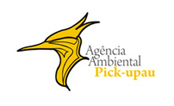17/08/2005 - Figures released
today by Environment Canada demonstrate that
in 2004, for the fifth year in a row, there
has been a decline in the amount of hazardous
wastes and hazardous recyclable materials
imported into Canada. Hazardous waste exports
also declined between 2003 and 2004.
The figures for 2004 indicate that imports
of hazardous wastes destined for disposal
declined by over 12,000 tonnes from 2003 quantities.
During the same period, imports of hazardous
recyclable materials destined for environmentally
sound recovery or recycling operations increased
by nearly 11,000 tonnes, or 5.8%. Most notable
is the decline in the quantity of imported
hazardous wastes destined for incineration
and physical/chemical treatment in the province
of Quebec.
The Government of Quebec has placed more
stringent controls on the registration of
disposal facilities and their operating conditions,
as well as implemented pre-treatment requirements
for landfilling. As a consequence, in 2004
a number of facilities in Quebec have reduced
their imports from other countries for disposal
as they make modifications to their operations
in order to meet the new standards and specifications.
The 2004 figures also show
that Canadian exports of hazardous wastes
and hazardous recyclable materials decreased
by almost 13,000 tonnes since last year. This
is a decrease of about 4% overall between
2003 and 2004, from 321,294 tonnes to 308,357
tonnes. The reductions in exports are due
in part to a decrease in the amount of used
acids and bases sent for regeneration or reuse,
as well as a drop in the quantities of spent
catalysts, solvents and metal containing materials
sent for recovery or recycling operations
in the U.S.

Each year, Environment Canada releases statistics
on the export and import of hazardous wastes
and hazardous recyclable to measure progress
against waste reduction and environmental
sound management of waste goals set by federal-provincial-territorial
governments in 2000 and 2001. These hazardous
wastes and recyclable materials can come from
many different sources, including industrial
waste, or from household products such as
cleansers, used batteries, oil-based paints
and leftover pesticides. Due to their makeup,
these wastes can pose potential risks to both
human health and the environment.
The disposal of the waste we produce, be
it household non-hazardous garbage or hazardous
industrial waste, needs to be done in an environmentally
sound manner, so that human health and the
environment are protected. Managing waste
in an environmentally sound manner also makes
economic sense. Because of Canada’s close
geographic and economic relationship with
the U.S., reducing the distance hazardous
waste needs to travel for instance, can significantly
reduce cost to industry and the risks associated
with the time spent during transport.
Since 1992, the Government of Canada has
had strict regulations on the transboundary
movement and tracking of hazardous wastes
and hazardous recyclable materials. In addition,
the recently published Export and Import of
Hazardous Waste and Hazardous Recyclable Material
Regulations, which will come into force in
November of this year, will further contribute
to the protection of the environment and human
health and will modernize the control regime.

